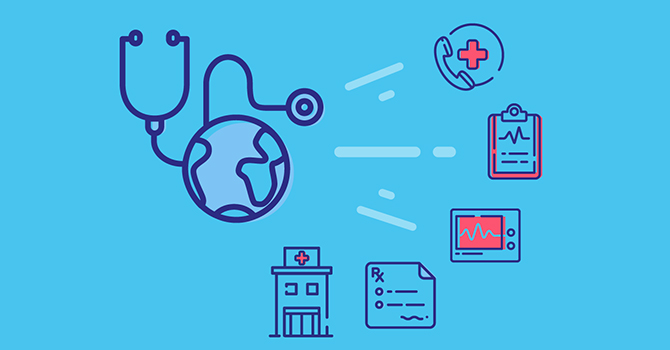Comprehensive Healthcare RCM for Improving Person Billing and Repayments
Comprehensive Healthcare RCM for Improving Person Billing and Repayments
Blog Article
A Comprehensive Guide on How Healthcare RCM Works to Enhance Payment and Collections
Navigating the intricacies of health care revenue cycle management (RCM) is important for carriers intending to boost their invoicing and collections procedures. The overview unloads the details of RCM, from client registration to accounts receivable administration, supplying insights into enhancing each action.
Comprehending Income Cycle Administration
Comprehending the complexities of Earnings Cycle Monitoring (RCM) is crucial for health care companies aiming to maximize their economic performance. RCM is an essential management feature that includes the whole monetary process of individual care, from the preliminary appointment readying to the last repayment of the balance. It is a complex procedure made to identify, accumulate, and handle the income from the services given to individuals. Effective RCM makes certain that doctor obtain timely and precise repayments, reducing the danger of revenue loss and enhancing cash money circulation.
The RCM procedure begins when a patient timetables an appointment and expands through the client's care journey, including billing and collections. A key purpose is to lower the time between receiving and giving a service settlement, hence improving the organization's financial health and wellness. RCM involves numerous functions such as patient enrollment, insurance policy verification, fee capture, coding, claims submission, repayment publishing, and dealing with charms and rejections.
Secret Elements of RCM
In the world of Revenue Cycle Administration (RCM), understanding its crucial parts is fundamental to achieving monetary efficiency within medical care companies. RCM is a comprehensive procedure that incorporates different stages, each vital to making sure reliable invoicing and collections. The primary elements include client enrollment, insurance coverage verification, fee capture, coding, claim entry, settlement publishing, and receivable management.


As soon as coded, insurance claims are submitted to payers, where accuracy is critical to prevent delays or rejections - Healthcare RCM. Payment posting includes recording the received payments, which enables for the settlement of accounts. Last but not least, accounts receivable management concentrates on tracking and resolving unpaid insurance claims, ensuring prompt follow-up and resolution
Each part of RCM is interconnected, and inefficiencies in any type of component can interfere with the entire cycle. As a result, grasping these aspects is essential for doctor to maximize revenue and improve their financial wellness.
Methods for Efficient Payment

Systematizing invoicing procedures across the company is another essential method. Developing clear guidelines for paperwork, coding, and entry assists preserve uniformity and compliance with regulatory needs. Training personnel routinely on these procedures makes sure everybody is current with the current modifications in invoicing codes and payer policies.
Precise charge capture is crucial in avoiding revenue leak. Applying routine audits and monitoring systems permits for the recognition and try these out modification of discrepancies before they influence profits. Furthermore, maintaining open lines of communication with payers helps to quickly settle any kind of disagreements or misconceptions that may develop.

Lastly, interesting patients early in the invoicing procedure by supplying clear quotes and educational products regarding their financial obligations can significantly decrease confusion and improve repayment timeliness. These methods jointly contribute to a much more financially healthy and effective invoicing system.
Enhancing Collections Processes
Provided the complexities of medical billing and the range of payer requirements, improving the collections process involves applying critical actions that make certain precise and prompt settlement of services rendered. Automation devices can help in tracking case standings, sending prompt reminders to individuals, and taking care of denials more effectively.
Clear and clear patient communications are vital. Giving detailed explanations of fees and using flexible payment strategies can increase client satisfaction and timely payments.
Normal audits of the collections have a peek here process must be conducted to determine locations for enhancement and make certain compliance with laws. By evaluating information, health care companies can identify fads, anticipate possible concerns, and adjust techniques appropriately (Healthcare RCM). Ultimately, a well-enhanced collections process not just supports financial wellness however additionally adds to a more smooth experience for patients and staff alike
Optimizing Earnings Streams
Structure upon the structure of a strong collections procedure, medical care organizations can even more reinforce their monetary security by strategically optimizing earnings streams. This involves a multi-faceted technique, beginning with a detailed analysis of existing profits sources to identify ineffectiveness and areas for growth. Utilizing advanced data analytics devices allows organizations to acquire understandings into payer mix, person demographics, and solution utilization patterns, permitting data-driven choices that enhance profits capture.
Applying automated payment systems can considerably minimize mistakes and quicken insurance claims processing, making certain that revenue is collected extra successfully. Moreover, optimizing payer contracts through normal arrangements can boost repayment rates and terms, straight influencing the lower line. Diversifying service offerings, such as incorporating telehealth or health programs, can also bring in a wider patient base, thus increasing profits capacity.
Another critical element is improving person involvement and fulfillment, as satisfied patients are most likely to follow treatment plans and make prompt repayments. Providing adaptable settlement alternatives and transparent invoicing techniques can boost collections and foster patient loyalty. Healthcare RCM. By taking on these strategies, health care companies can produce a more resilient financial structure, making sure sustained development and stability in an ever-changing market landscape
Verdict
To conclude, medical care Profits Cycle Administration (RCM) plays a vital duty Resources in enhancing billing and collections processes by integrating essential elements such as individual registration, insurance coverage verification, cost capture, coding, claims submission, and accounts receivable monitoring. By using innovative technology, systematizing treatments, and promoting patient engagement, doctor can significantly decrease case rejections, accelerate repayment cycles, and boost capital. This thorough method to RCM ultimately causes boosted financial efficiency and sustainability for medical care companies.
The RCM procedure begins when an individual schedules a consultation and extends through the client's treatment journey, including payment and collections.One more important element is enhancing person involvement and fulfillment, as satisfied clients are a lot more most likely to stick to treatment strategies and make prompt settlements. Providing versatile repayment choices and clear billing techniques can improve collections and foster person loyalty.In verdict, medical care Earnings Cycle Management (RCM) plays a vital role in enhancing invoicing and collections procedures by incorporating essential components such as person registration, insurance policy confirmation, charge capture, coding, asserts entry, and accounts receivable administration. By using sophisticated modern technology, standardizing treatments, and cultivating patient involvement, healthcare companies can dramatically decrease insurance claim rejections, increase payment cycles, and boost cash flow.
Report this page